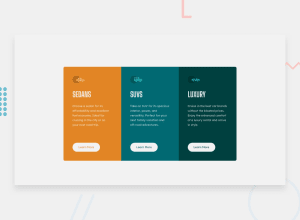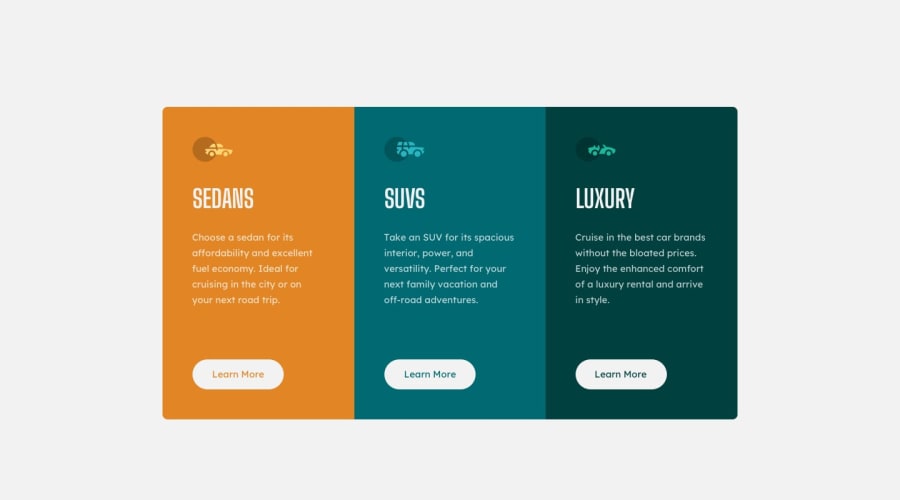
Design comparison
Solution retrospective
Fun challenge! Thanks to discovering the var() function on Frontend Mentor I was able to use it in this build. No questions on this one but I'm always looking to simplify/improve my code, so any suggestions are welcome!
Community feedback
- @AdrianoEscarabotePosted about 2 years ago
Hi Jeremy, how are you?
I really liked the result of your project, but I have some tips that I think you will like:
1- All page content should be contained by landmarks, you can understand better by clicking here: click here
We have to make sure that all content is contained in a reference region, designated with HTML5 reference elements or ARIA reference regions.
Example:
native HTML5 reference elements:
<body> <header>This is the header</header> <nav>This is the nav</nav> <main>This is the main</main> <footer>This is the footer</footer> </body>ARIA best practices call for using native HTML5 reference elements instead of ARIA functions whenever possible, but the markup in the following example works:
<body> <div role="banner">This is the header</div> <div role="navigation">This is the nav</div> <div role="main">This is the main</div> <div role="contentinfo">This is the footer</div> </body>It is a best practice to contain all content, except skip links, in distinct regions such as header, navigation, main, and footer.
Link to read more about: click here
2- Why it Matters
Navigating the web page is far simpler for screen reader users if all of the content splits between one or more high-level sections. Content outside of these sections is difficult to find, and its purpose may be unclear.
HTML has historically lacked some key semantic markers, such as the ability to designate sections of the page as the header, navigation, main content, and footer. Using both HTML5 elements and ARIA landmarks in the same element is considered a best practice, but the future will favor HTML regions as browser support increases.
Rule Description
It is a best practice to ensure that there is only one main landmark to navigate to the primary content of the page and that if the page contains iframe elements, each should either contain no landmarks, or just a single landmark.
Link to read more about: click here
Prefer to use
removerpxto have your page working better across browsers and resizing the elements properlyThe rest is great!!
Hope it helps...👍
Marked as helpful0 - @correlucasPosted about 2 years ago
👾Hello @Duck322, Congratulations on completing this challenge!
Great code and great solution! I’ve few suggestions for you that you can consider adding to your code:
1.To make your CSS code easier to work you can create a
single classto manage the content that is mostly the same for the 3 cards (paddings, colors, margins and etc) and another class to manage the characteristics that are different (colors and icon), this way you'll have more control over then and if you need to change something you modify only one class.2.Instead of use
IDto give style to your elements, useCLASSthat’s better, note that withidthese styles are not reusables, so prefer to useIDforms and Javascript andCLASSfor styling.It is not advisable to use IDs as CSS selectors because if another element in the page uses the same/similar style, you would have to write the same CSS again.✌️ I hope this helps you and happy coding!
Marked as helpful0 - @VCaramesPosted about 2 years ago
Hey @Duck322, great job on this project!
Some suggestions to improve you code:
- When it comes to headings, your only allowed to use one <h1> heading per page. In your case, you're using them for each heading in this card. In this challenge, there isn't one heading thats more important than the other, so its best to use the <h2> heading instead.
Source:
https://developer.mozilla.org/en-US/docs/Web/HTML/Element/Heading_Elements
https://www.w3schools.com/html/html_headings.asp
- While having interactive content (cards, links, icons, buttons, etc…) can definitely make content less static, if not done properly, it can actually have negative effect on your users experience. By simply just applying a “hover” effect to your content, you’re assuming that every device is compatible with “hover” effects. Unfortunately, most devices are not. To provide your users a better experience, you can use the @media (hover: hover) . Now users that that are devices that are not “hover” compatible will be able to enjoy your content.
Sources:
https://css-tricks.com/solving-sticky-hover-states-with-media-hover-hover/
Happy Coding!
Marked as helpful0
Please log in to post a comment
Log in with GitHubJoin our Discord community
Join thousands of Frontend Mentor community members taking the challenges, sharing resources, helping each other, and chatting about all things front-end!
Join our Discord
